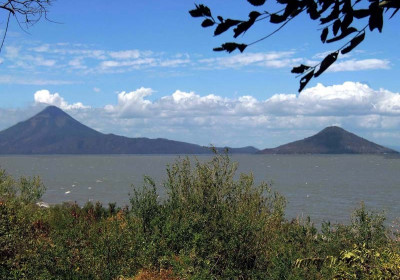Volcanoes
Cone-shaped Volcanoes
Many mountains are formed by folding, faulting, uplifting, and the erosion of the Earth's crust. Volcanic terrain, however, is built by the slow accumulation of erupted lava. The volcano's vent may be visible as a bowl-shaped depression at the summit of a cone or on the slope of the mountain. Through a series of cracks within and beneath the volcano, the vent connects to one or more linked storage areas of molten or partially molten rock (magma). This connection to fresh magma allows the volcano to erupt over and over in the same location. In this way, the volcano grows larger, until it is no longer stable. Pieces of the volcano collapse as rock falls or in the form of landslides.
There are about 1,350 potentially active volcanoes worldwide, not counting the volcanoes under the oceans. About 500 of these have erupted in the past 100 years. Many of these are located around the Pacific Ocean in what is known as the "Ring of Fire."





